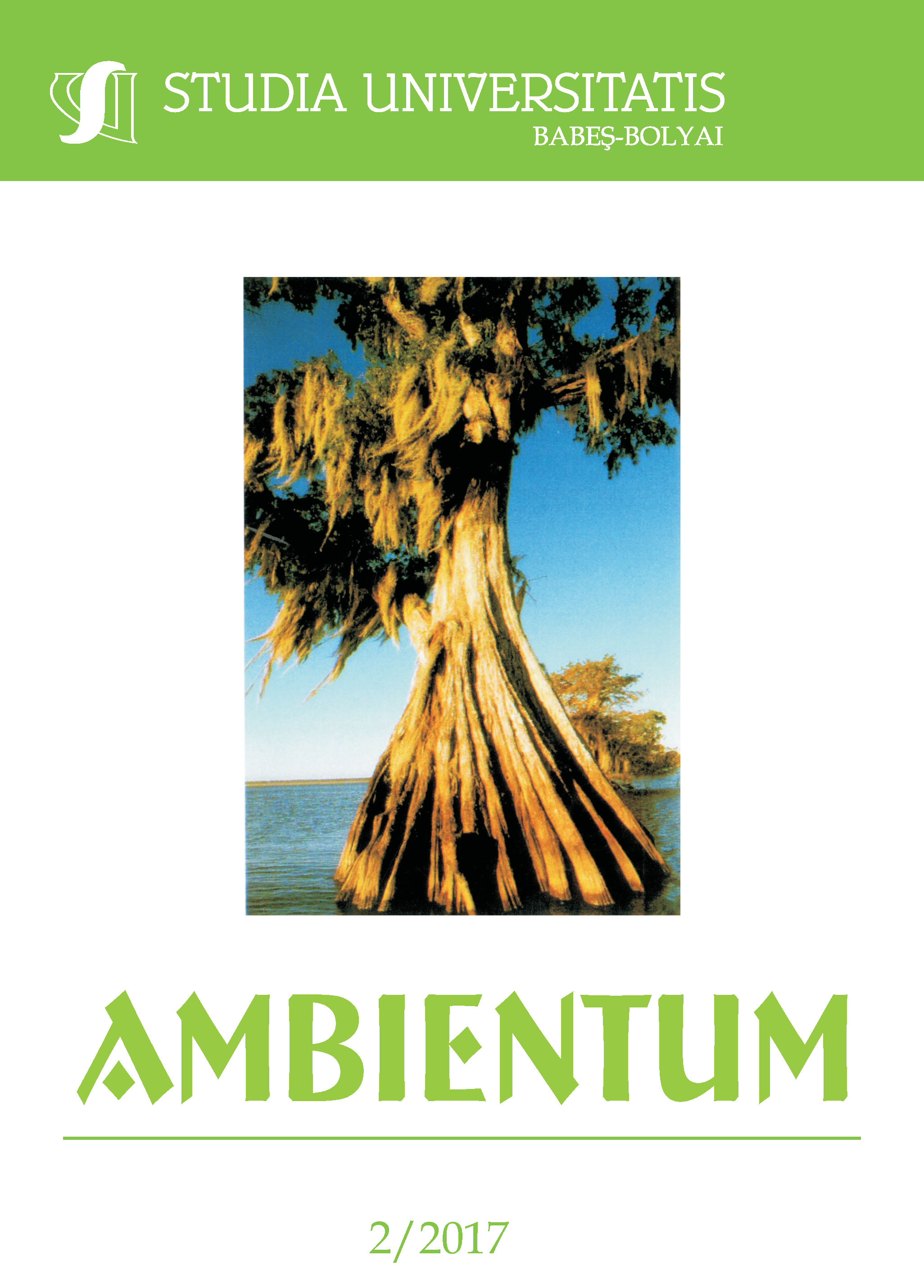AUTOMATIC SYSTEM FOR CONTINUOUS MONITORING OF INDOOR AIR QUALITY AND REMOTE DATA TRANSMISSION UNDER SMART_RAD_EN PROJECT
DOI:
https://doi.org/10.24193/subbambientum.2017.2.07Keywords:
indoor radon, prototype system, indoor air quality.Abstract
In September 2016, the SMART-RAD-EN Project was launched, funded by the Competitiveness Operational Programme 2014-2020 of Romania, to be developed up to the year 2020. The ambitious overall objective is focus on to the concept of "smart city" in terms of intelligent integrated solutions, which it aims to achieve in international premiere, in order to improve public health by increasing indoor environmental quality and optimizing the energy efficiency of housing in five urban areas of Romania. In this study, the current status of the development of the prototype system for continuous monitoring and remote data transmission on radon levels and other household air pollutants (CO2, CO, VOCs and temperature, pressure and humidity sensors) is presented, as an important objective in the frame of the SMART_RAD_EN project. The prototype for intelligent monitoring system was assembled and now is involved in the testing process. Metrology and quality assurance of the prototype system will be carried out within accredited European laboratories and by consulting with the international scientific experts. Remote data transmitted will allow: (1) real time interactive visualization, of the impact of user behavior on indoor air quality; (2) information in case of exceeding threshold levels; (3) to produce estimates of future pollution as a result of the correlation with the meteorological parameters (temperature, pressure and humidity) and user activity. The system, metrological validated, will be implemented in 100 houses with high exposure to radon and other ambient pollutants from the main Romanian urban agllomerations – Cluj-Napoca, Bucuresti, Timisoara, Iasi and Sibiu.References
Alsmo T., Alsmo C., 2014, Ventilation and relative humidity in Swedish buildings. Journal of Enviromental Protection, 5, pp.1022 – 1036.
Andersen I., Lundqvist G.R., Molhave, L., 1976, The Effect of air humidity and sulphur dioxide on formaldehyde emissions from a construction material (Chipboard). Holzforschung und Holzverwertung, 28, pp.120-121.
Cosma C., Jurcuţ T., 1996, Radon and the surrounding environment. Dacia, Cluj-Napoca, 208 p.
Cosma C., Cucoş (Dinu) A., Dicu T., 2013, Preliminary results regarding the first map of residential radon in some regions in Romania, Radiation Protection Dosimetry, 155, pp. 343-350.
Council Directive 2013/59/Euratom laying down basic safety standards for protection against the dangers arising from exposure to ionising radiation (http://www.ecolex.org/ecolex/ledge/view/RecordDetails;DIDPFDSIjsessionid=0143E1A4CE30CABFEEE93B0CE3BBFF0F?id=LEX-FAOC130004&index=documents)
Cucoş (Dinu) A., Papp B., Dicu T., Moldovan M., Burghele B.D., Moraru I., Tenter A., Cosma C., 2017, Residential, soil and water radon surveys in north-western part of Romania, Journal of Environmental Radioactivity, 166 (2), pp. 412-416.
Darby S., Hill D., Deo H., Auvinen A., Barros-Dios J.M., Baysson H., Bochicchio F., et al., 2006, Residential radon and lung cancer - detailed results of a collaborative analysis of individual data on 7148 persons with lung cancer and 14 208 persons without lung cancer from 13 epidemiologic studies in Europe. Scandinavian Journal of Work, Environment & Health, 32, pp.1–84.
Field R.W., Krewski D., Lubin J.H., Zielinski J.M., Alavanja M., Catalan V.S., et al., 2006, An overview of the North American case-control studies of residential radon and lung cancer, Journal of Toxicology and Environmental Health, A (69), pp. 599-631.
Folea S., Mois G., 2015, A Low-Power Wireless Sensor for Online Ambient Monitoring, Sensors Journal, 15, DOI: 10.1109/JSEN.2014.2351420.
IEC Beak Consultants Ltd., 1983, Indoor Air Quality, Cambridge Sealed Homes, a Report for Ontario Ministry of Municipal Affairs and Housing, IEC Beak, Mississauga, Ontario.
Pavel V., Vasilache M., Chereches M., 2006, Consideraţii asupra economiei de energie în clădirile din România (1974-2004), Masa rotundă „Dezvoltarea durabilã în construcţii civile sub impactul modificarilor climatice, preţului crescând al energiei şi riscului seismic” organizată de Academia de Ştiinţe Tehnice, Universitatea Tehnică "Gh. Asachi" Iaşi, Inspectoratul de Stat în Construcţii, Iaşi, 19 mai 2006.
Reinhart C.F., 2002, The Future for renewable energy 2. James & James Science Publishers, London, UK, pp.79–114.
WHO - World Health Organization, 1983, Indoor Air Pollutants: Exposure and Health Effects, EURO Rep. Stud. 78, pp.1–42.
WHO - World Health Organization, 2009, Handbook on indoor radon: a public health perspective, ISBN 9789241547673, pp.1-93.
www.irart.ro
www.smartradon.ro
Downloads
Published
How to Cite
Issue
Section
License
Copyright (c) 2017 Studia Universitatis Babeș-Bolyai Ambientum

This work is licensed under a Creative Commons Attribution-NonCommercial-NoDerivatives 4.0 International License.



